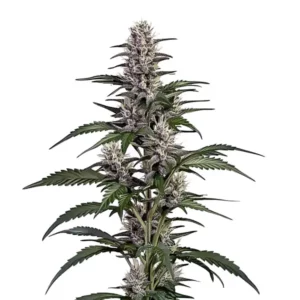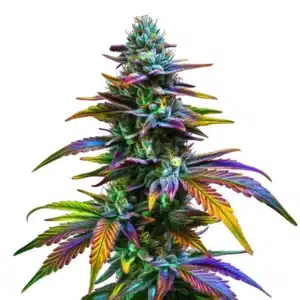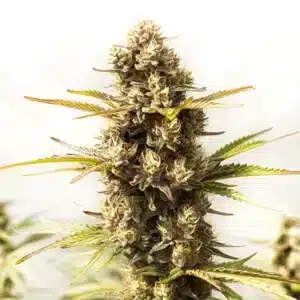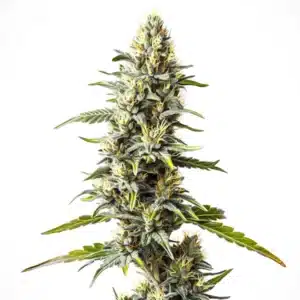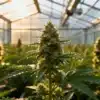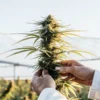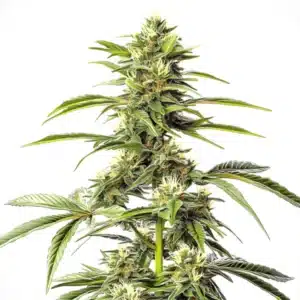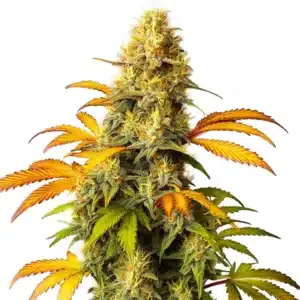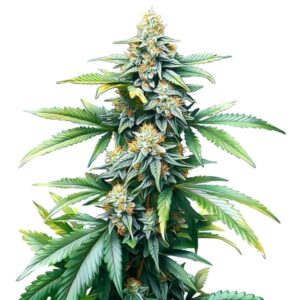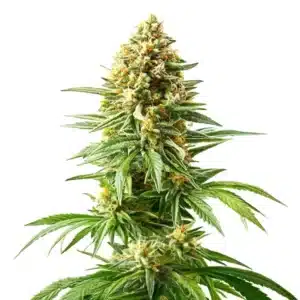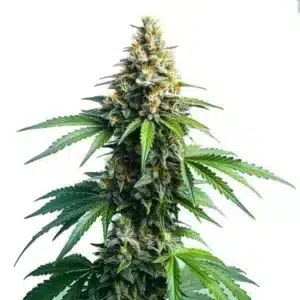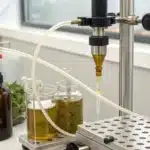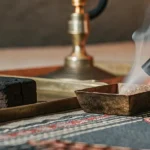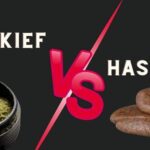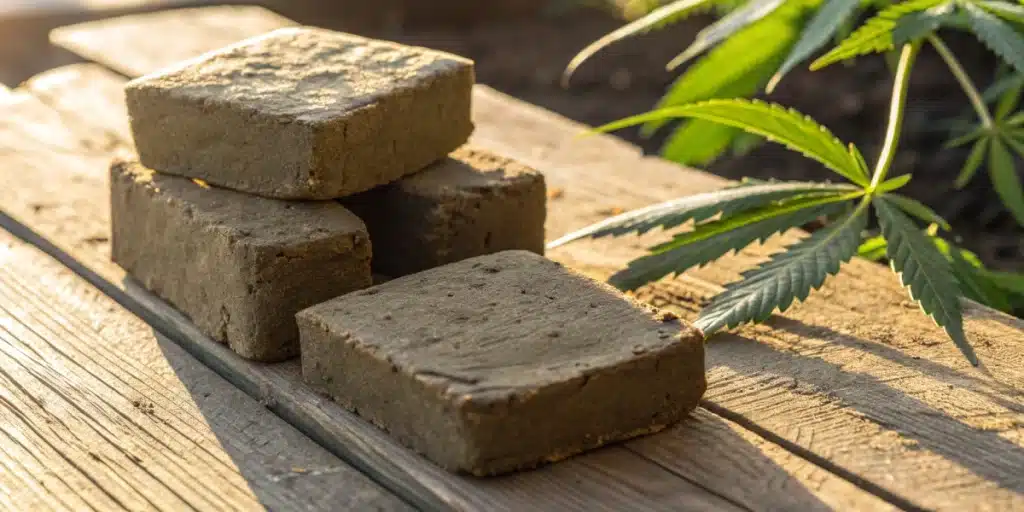
Hashish vs Charas: Origins, Production & Effects
Definitions and Origins
Charas and hashish are both forms of cannabis concentrate, yet they stand apart in how they’re made and where they come from. Charas is crafted by hand-rubbing the resin directly from living cannabis plants, most often grown in the Indian subcontinent. Hashish, on the other hand, is produced from the resin of dried, harvested plants. The main distinction lies in the source material: charas is derived from live, growing plants, while hashish comes from plants that have been cut, dried, and cured.
What Is Hashish?
Cannabis plants produce resinous, lollipop-shaped glands called trichomes, where the psychoactive components are concentrated. Hashish takes shape when these trichomes are separated from dried cannabis flowers, collected, and compressed into a dense concentrate. It often appears in solid blocks or soft paste. Traditional producers in regions like Morocco and Afghanistan adapt drying and sieving techniques to extract resin granules, which are then pressed to form uniform bricks.
Recommended Strains
Afghan Autoflower
|
|
THC | 15% - 17% (Medium) |
|
|
Type | Autoflowering |
|
|
Yield | Medium |
|
|
Phenotype | 90% Indica / 10% Sativa |
Afghan Hash Plant Regular
|
|
THC | 18% - 22% (Medium) |
|
|
Type | Regular |
|
|
Yield | Medium |
|
|
Phenotype | 90% Indica / 10% Sativa |
Consumers often smoke hashish in pipes, bongs, or roll it into joints. Vaping hashish has also gained traction. Hashish yields strong effects at lower quantities compared to raw flower, so beginners should start with small doses.
What Is Charas?
Charas emerges when cultivators hand-rub live cannabis buds to collect resin on their palms. This method thrives in regions such as the Himalayas where traditional farmers gather trichomes directly from fresh plants. They roll the resin into sticky balls or slender sticks. Charas may carry a darker hue and richer fragrance profile than pressed concentrates. Its artisanal nature highlights a tactile bond between grower and harvest.
Historical Roots in Culture
Cannabis concentrates trace back thousands of years. Early records in the Middle East and South Asia reference resin extracts used in rituals and medicine. In fact, hashish was likely invented by nomadic tribes as a way to transport the plant’s psychoactive essence without having to carry bulky flowers. As a concentrate, it also increases the potency of THC by two or three times compared to the original plant material. As colonization and trade expanded, knowledge of resin techniques reached Europe and the Americas, and the counterculture of the 20th century popularized resin for recreational use.
Promos & Deals
Production Methods
Traditional Hashish Techniques
To make hashish, traditional makers separate trichome heads from dried plant matter. This is often done by beating or agitating the flowers over fine mesh screens to collect the resulting powder, known as kief. Artisans then gently heat the kief and press it between wooden molds or stone slabs, fusing the particles into cohesive slabs or balls. Quality depends on source material and the skill of preserving terpenes.
Hand-Rubbing Charas Process
Hand-rubbing for charas begins with selecting live cannabis plants at peak resin production. This method is most typical in tropical climates like the Himalayas and is often used with Sativa varieties that have a very long flowering period, allowing farmers to rub the live flowers for resin multiple times throughout the season. Because it is a manual technique performed on a live plant, far less resin is extracted compared to other methods. However, the final product is considered by many to be much more flavorful and rich in terpenes. Harvesters gently stroke flowering tops between their palms to collect the sticky resin, which they then shape into balls or sticks.
Modern Mechanical Extraction
Mechanical extraction uses machines like bubble bags and rosin presses. Bubble bag systems agitate cannabis material in cold water. This system uses ice and water because freezing the trichomes to below 4°C (39°F) makes them brittle, causing them to break off from the plant material easily and cleanly. Technicians filter this mix through graded mesh bags to isolate the resin. Rosin pressing applies heat and pressure to plant material, yielding a translucent, solventless concentrate known for high terpene content.

Chemical and Physical Properties
THC/CBD Profiles
Resin concentrates often contain higher THC levels than raw flower. The extraction method heavily influences the final potency. For example, traditional dry sift hashish typically contains 30-40% THC. More modern ice water extractions (bubble hash) can reach up to 50% THC, while solvent-based extractions (using gases) can achieve purities of 80-90% THC. Producers select strains with targeted cannabinoid profiles to achieve desired effects.
Aroma and Terpene Content
Terpenes shape the scent profile of resin, contributing floral, spicy, or citrus notes. It is widely considered that dry extractions preserve the most aroma and terpenes. Processes that use water, ice, or gas solvents can often cause a loss of the more delicate flavors and nuances of the original plant. Charas delivers vibrant, live resin fragrances, while hashish may present earthier, aged nuances from curing.
Texture and Color Variations
Resin texture ranges from soft, pliable paste to hard, crumbly bricks. Hand-rubbed charas often stays sticky, while pressed hashish can vary from pale blond to dark brown. Color signals resin age and processing style, with lighter hues usually indicating fresher concentrates.
Consumption Styles
- Smoking: Resin can be placed in pipes, bongs, or rolled into joints with flower.
- Edibles and Infusions: Resin can be decarboxylated and infused into butter or oil to make edibles. This method delivers slower, stronger, and longer-lasting effects.
- Vaporization: Vaporizers heat concentrates to release cannabinoids without combustion, offering a cleaner lung hit and preserving more flavor.
Legal and Cultural Contexts
Regional Legality Differences
Legal treatment of resin concentrates varies widely across jurisdictions. Some countries permit medical hashish under strict regulations while banning recreational use. States within federations may set independent laws, creating patchwork policies. Travelers must research local rules and carry documentation when allowed. In designated zones, licensed dispensaries sell resin products with age restrictions. Meanwhile illicit markets still thrive in areas lacking legal frameworks. Variations in law shape consumer access, market growth, and industry standards.
Canada and several US states regulate concentrates similarly to flower, requiring safety testing and labeling. European nations vary from broad prohibitions to limited medical allowances. In parts of Asia and Africa, resin faces harsh penalties despite cultural roots. Advocates argue for reform based on harm reduction and economic benefits. Legislative shifts often follow public opinion polls and scientific review boards. Monitoring global trends helps stakeholders predict emerging markets and navigate shifting compliance issues.
Cultural Ceremonies and Use
Charas holds sacred status in certain spiritual rituals where participants incorporate resin into prayer sessions. Sufi festivals in India and Pakistan feature communal charas offerings. Devotees believe the resin connects them to divine consciousness and fosters introspection. In Morocco, hashish cafes offer social hubs where locals share stories and music. These venues blend leisure and tradition, reinforcing community bonds. Resin plays an integral part in ceremonies that honor heritage and collective memory.
Artists and musicians in creative circles often mention resin as a source of inspiration during collaborative sessions. Its ritual use extends to artistic performances and film sets. Workshops and retreats incorporate resin experiences into meditation and healing practices. Culinary events showcase resin infusions alongside local cuisine. Cultural exchange programs introduce visitors to historic resin traditions. This living tapestry highlights resin as more than a substance and instead a medium for human connection.
Contemporary Market Trends
Market demand for resin concentrates has grown alongside legal cannabis reforms. Dispensaries stock varied resin formats, from pressed hashish bricks to live rosin cartridges. Brands differentiate through strain specific releases and artisanal batch numbers. Packaging emphasizes transparent labeling that covers THC, CBD, terpene profiles, and harvest dates. Subscription services deliver curated resin selections to enthusiasts. These innovations reflect a shift toward premium, craft oriented offerings that prioritize quality and traceability.
E commerce platforms connect consumers with small scale producers and importers who ship resin under compliance guidelines. Influencers review new resin drops on social media, driving trends and awareness. Retailers offer tasting flights that let customers sample multiple resin types in one session. Data analytics tools help businesses forecast demand and optimize inventory. Industry conferences and competitions celebrate resin craftsmanship, awarding top entries for potency, aroma, and consistency. These trends propel resin into mainstream commerce.

FAQs about hashish vs charas
Which is more potent, hashish or charas?
Artisans who make charas from live buds often preserve more cannabinoids and terpenes, creating a sensation of higher potency. Calmly produced hashish may lose some compounds during curing and pressing steps. Yet actual strength depends largely on strain genetics and extraction precision. Lab reports reveal that both styles can reach comparable THC levels. Users seeking strong effects should consult detailed test results or ask knowledgeable sellers.
Can I make hashish by hand?
Yes you can create basic hashish by hand using dried flowers and a fine screen. Rub the buds gently against the mesh to collect trichome dust below. Gather the powder and apply heat and pressure from warm hands or a hair straightener to form a small disk. Working at low temperature and light pressure helps preserve flavor compounds. Start with small batches to practice technique safely.
How do flavors differ between them?
Flavors vary due to differences in plant materials and processing. Hand rubbed charas retains fresh resin oils, yielding bright herbal, citrus, and floral notes. Pressed hashish may develop earthier, spicy tones through extended curing and mild heat. Terpene profiles like myrcene and limonene shape the tasting experience. Extraction style affects intensity and nuance. Consumers often compare aroma samples before buying to match personal preferences.


